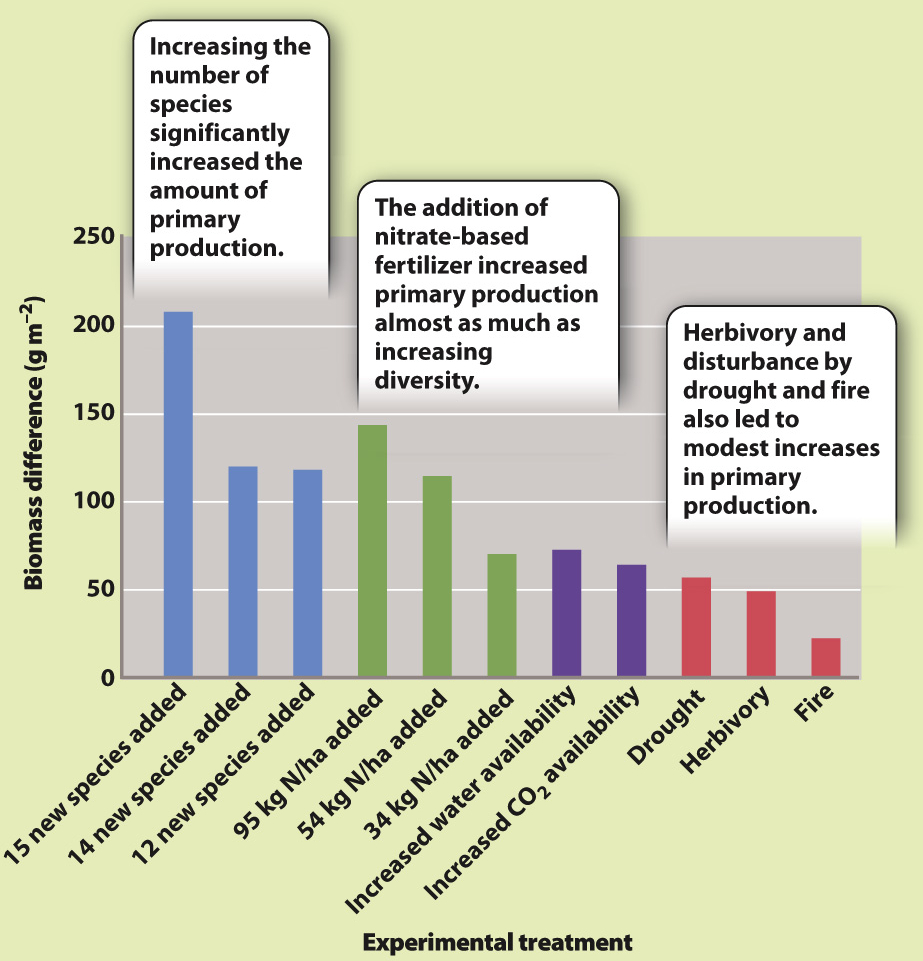HOW DO WE KNOW?
FIG. 47.18
Does species diversity promote primary productivity?
BACKGROUND The different plant species found in communities have combinations of leaves, stems, and roots that tap different sources of water and nutrients in the soil and capture light at different levels of sun and shade. Do the differences among plant species result in higher levels of primary production than would be possible with fewer species?
HYPOTHESIS Plant diversity promotes primary production within a community.
EXPERIMENT Ecologist David Tilman conducted a long-
RESULTS The graph shows that the addition of nitrogen fertilizer [quantified as kg of N per hectare (ha)] increased primary production significantly, and additional water, higher CO2, herbivory, and disturbance also resulted in at least a modest increase in productivity. The difference in primary production between high-

CONCLUSION The hypothesis was supported: In the grassland community under study, species diversity promoted primary production.
FOLLOW-
SOURCE Data from Tilman, D., P. B. Reich, and F. Isbell. 2012. “Biodiversity Impacts Ecosystem Productivity as Much as Resources, Disturbance, or Herbivory.” Proceedings of the National Academy of Sciences USA, 109:10394–